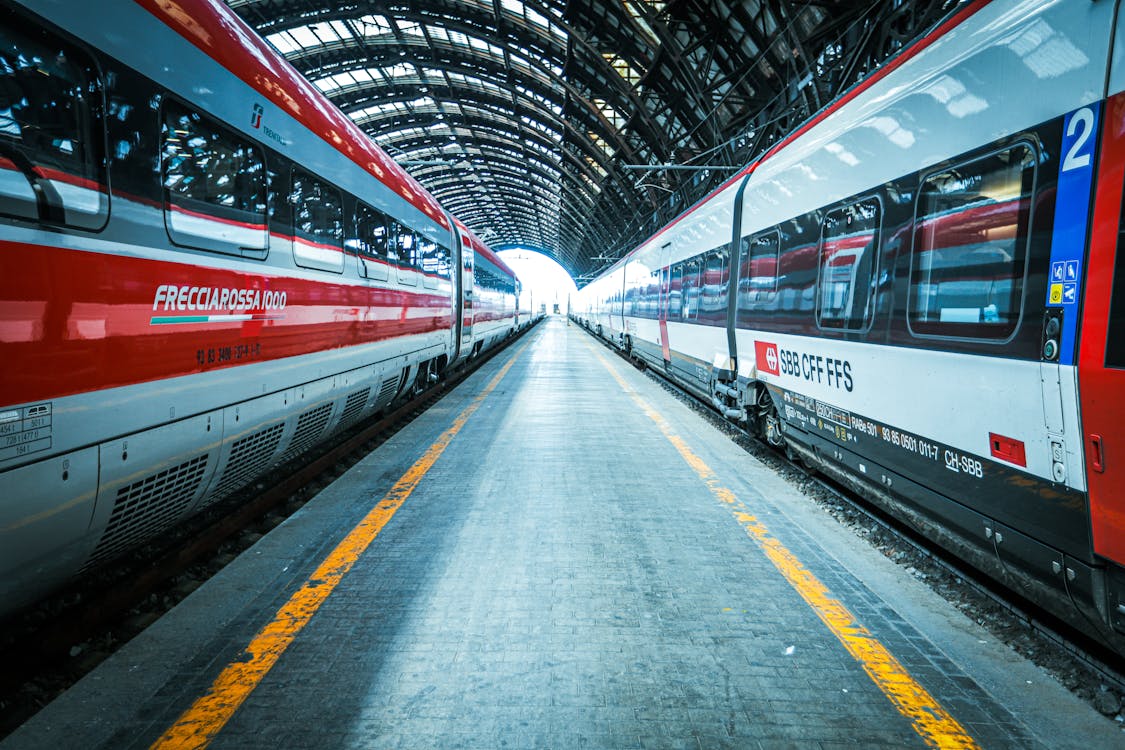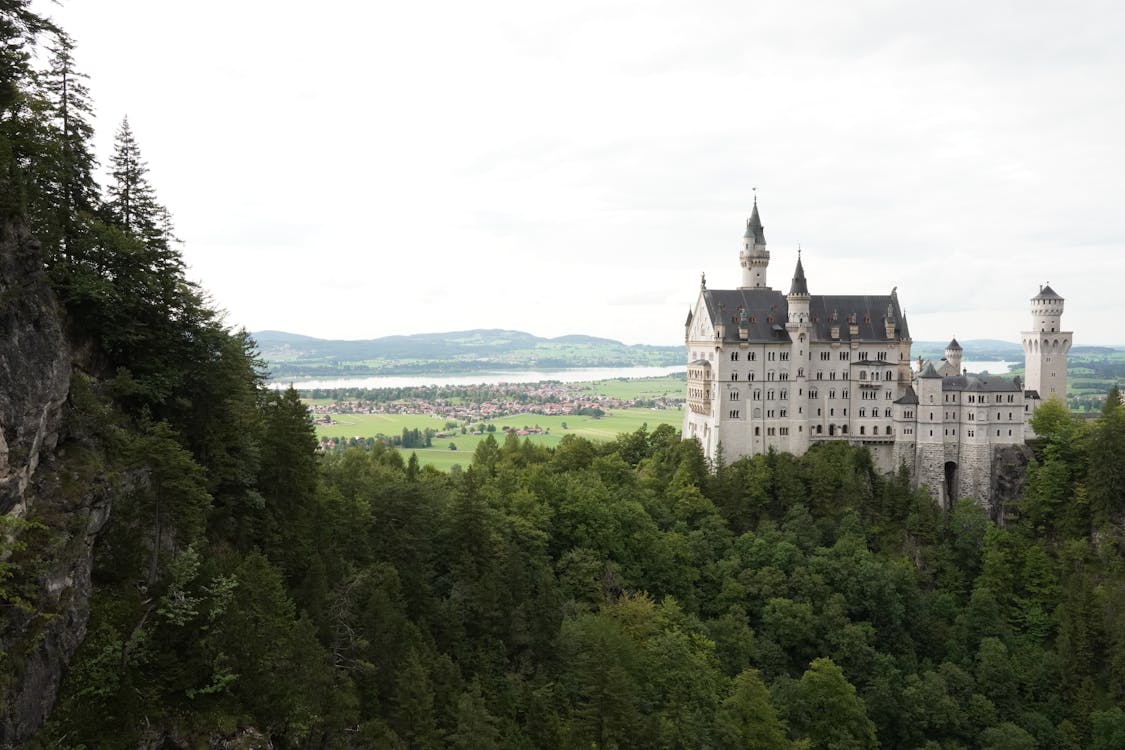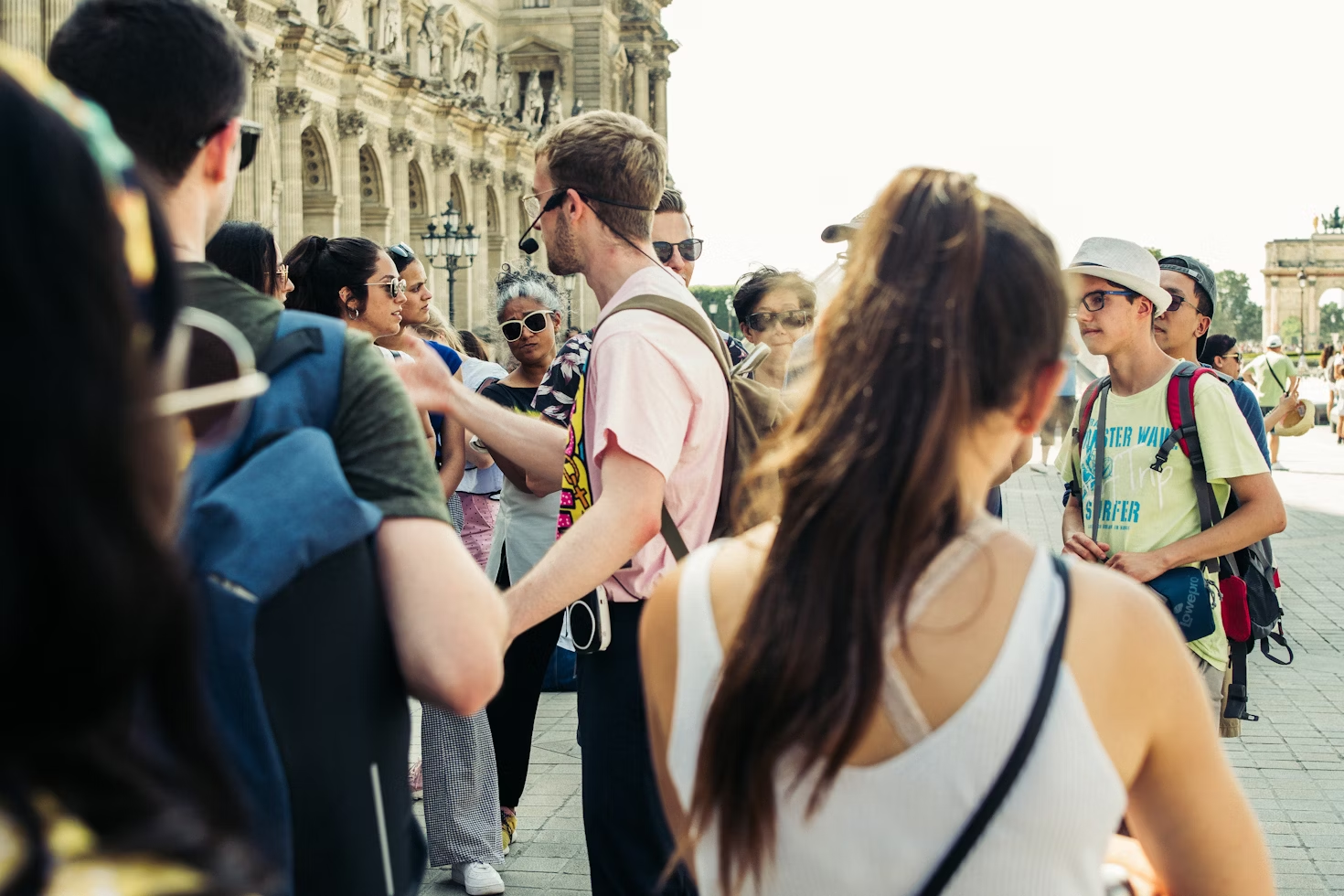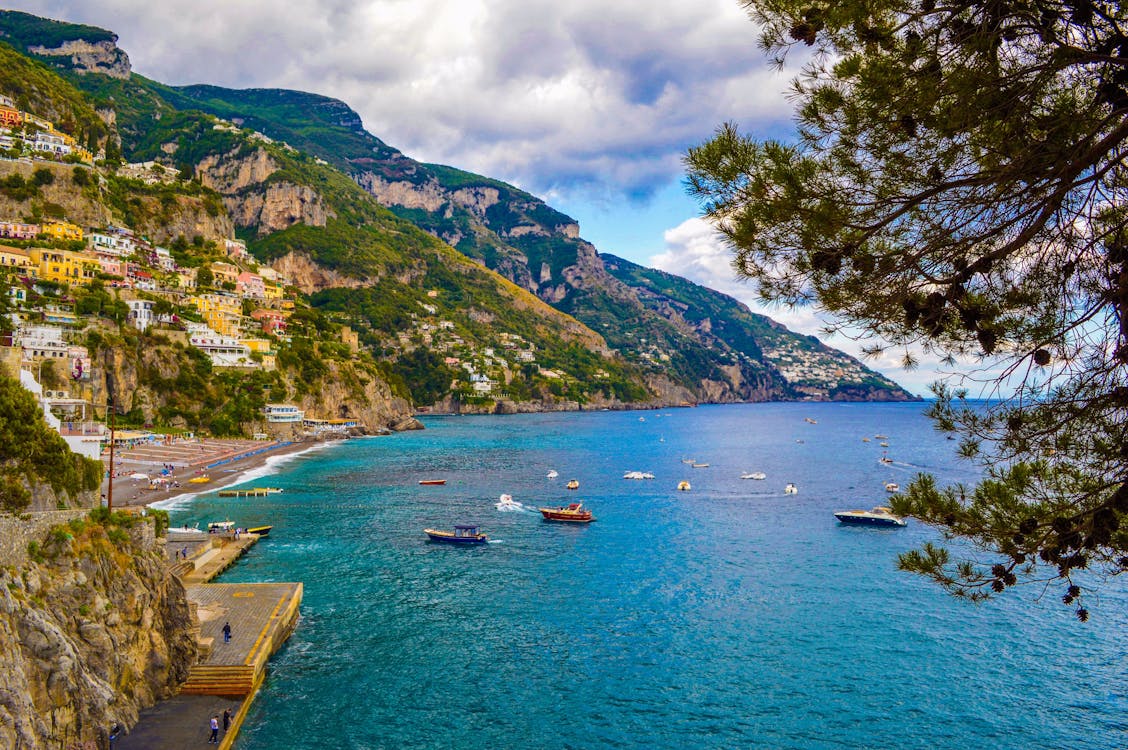Some train stations are destinations themselves—places so striking you’ll want to stay, not just sprint for your connection. Europe’s scenic train stations blend grand architecture with regional charm, turning simple transit hubs into memorable stops. From historic landmarks to modern marvels, these stations prove the journey matters as much as the destination.
- Some train stations are tourist attractions, not just transit points
- Grand architecture and regional character make them stand out
- Historic and modern stations both offer unique visual experiences
- Stations transform routine travel into memorable moments
- The journey becomes as important as the destination itself
If you love slow travel, you’ll appreciate these gems where beauty and transit collide. Check out more stunning landscapes when traveling from Germany to Italy by rail—another route brimming with photo-worthy moments.
Antwerpen-Centraal, Belgium: The Railroad Cathedral

Stepping into Antwerpen-Centraal feels like entering a palace, not a train station. This Belgian masterpiece blends iron, glass, and stone to create a cathedral of rail travel. With its soaring dome, marble floors, and intricate details, it’s easy to see why some call it the “Railroad Cathedral of Europe.”
The Grand Hall Experience
The grand hall stops visitors in their tracks—literally. Sunlight streams through the glass ceiling, illuminating gold accents, arched windows, and statues that watch over travelers. It’s hard not to linger, whether admiring the clock tower or studying the blend of Art Nouveau and Baroque influences. Arrive early just to wander before catching your train.
Diamond District Views
Antwerp is the world’s diamond capital, and the station sits at the edge of its glittering district. You can glimpse the bustling trade area where traders hurry between deals from the upper platforms. The contrast of historic station charm and modern commerce adds another layer to this scenic train station’s appeal. After exploring inside, take a short walk to see diamond shops sparkle under Belgian skies and discover why Antwerp is one of thoseEuropean cities where locals actually hang out.
São Bento Station, Porto: The Tile Masterpiece
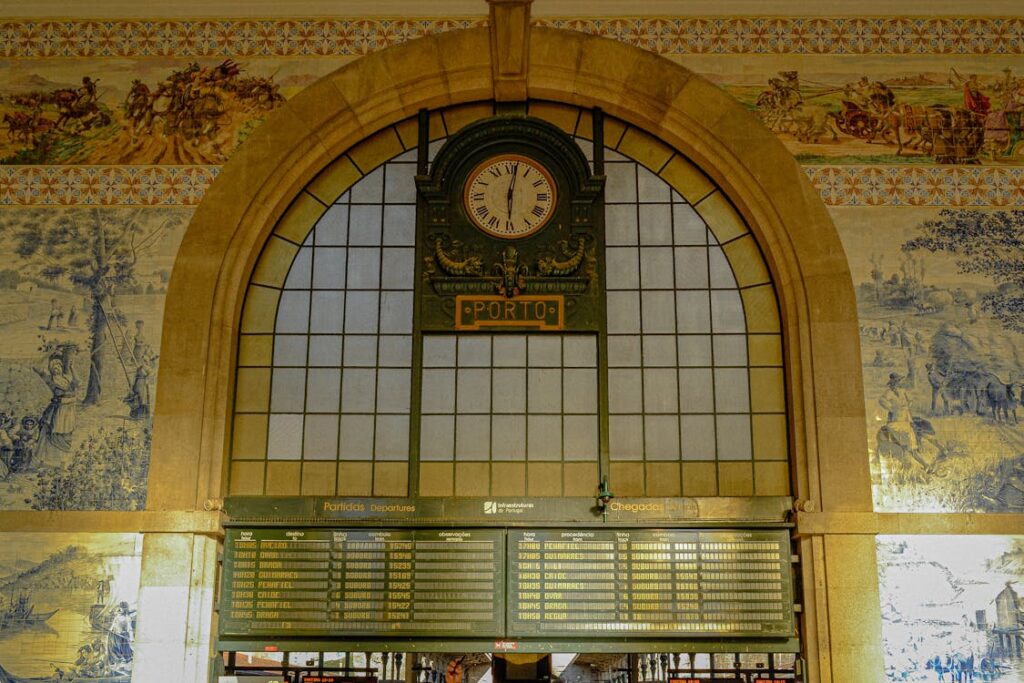
Forget rushing to your platform. At Porto’s São Bento Station, you’ll want to pause and stare—every wall tells a story. This isn’t just a transit hub; it’s a gallery of Portuguese history, wrapped in 20,000 shimmering azulejo tiles.
Azulejo Tile Narratives
The station’s main hall is a mosaic masterpiece. Every panel depicts a moment from Portugal’s past—battles, royal processions, rural life—all painted in cobalt blues and creamy whites. The tiles aren’t just decoration; they’re a history lesson you can walk through. Look for scenes like King João I’s 1387 marriage to Philippa of Lancaster or farmers tilling vineyards that still produce today’s famous Port wine.
Built in the early 1900s, the station replaced a Benedictine monastery (hence the name “São Bento”). Artist Jorge Colaço spent 11 years hand-painting these tiles, blending traditional techniques with grand storytelling.
Port Wine Stopover
Your train ticket doubles as a tasting pass. Just steps from São Bento, Porto’s historic Ribeira district spills toward the Douro River, where centuries-old wine cellars offer sips of the region’s liquid gold. Pop into a tasca for a glass of tawny or ruby Port, or cross the bridge to Vila Nova de Gaia for full tastings where barrels age in dusty caves.
The station’s tiles hint at this legacy—spot the grapevines and harvest scenes woven into the ceramic narratives.
No wonder locals say, “Even the trains run with art in Porto.” Don’t just pass through—stay long enough to see the stories unfold.
Milan Centrale: Italy’s Fascist-Era Colossus

Milan Centrale isn’t just a train station—it’s a monumental snapshot of Italy’s 20th-century ambition. Built under Mussolini but designed with sweeping grandeur, this station blends Fascist-era power with Parisian elegance. High-speed trains zip beneath its cavernous halls, but the real spectacle is the building itself, a colossus of travertine stone and steel.
The King’s Platform
Platform 21 isn’t for ordinary departures—it was built for royalty. This private track, hidden behind ornate gates, once hosted Italy’s King Vittorio Emanuele III and, later, Mussolini’s dramatic entrances. Today, it’s a quiet relic of the station’s layered history. Look for the royal waiting room, still intact with its gilded mirrors and marble floors, starkly contrasting to the bustling modern platforms nearby.
The station’s mixed architectural influences—part Beaux-Arts, part Fascist megalomania—reflect its chaotic construction. Delayed by World War I and revised under Mussolini, it finally opened in 1931, 25 years after plans began.
Underground Art Gallery
Beneath the main concourse, a surprise: Contemporary murals and installations transform the passageways into a free public gallery. Local artists have reinterpreted Milan’s creative soul here, from abstract mosaics to bold geometric designs. It’s a clever counterpoint to the station’s heavy stone facade—proof that even a Fascist-era giant can adapt.
The station’s duality fascinates: upstairs, the past looms large with eagle statues and imperial inscriptions; downstairs, modern Italy vibrates with color. Don’t miss the retro clock near Platform 10, where commuters still glance up just as travelers did a century ago. Whether starting your trip or simply passing through, time moves fast at Milan Centrale, but beauty lingers.
Helsinki Central: Nordic Grandeur

Helsinki Central Station isn’t just a transit hub—it’s a love letter to Finnish design. With its granite walls, soaring clock tower, and iconic lantern-bearing giants, this station turns everyday travel into an experience. It’s one of Europe’s most scenic train stations, where Nordic minimalism meets bold Art Nouveau flair.
Giant Statue Guardians
Four stone giants stand watch at the station’s entrance, holding globed lanterns that glow against Helsinki’s long winter nights. Sculpted by Emil Wikström, these figures have become symbols of the city—silent greeters for over a century. Their muscular forms contrast with the station’s clean lines, a mix of raw power and elegance that defines Finnish design.
The station itself, completed in 1919, was designed by Eliel Saarinen. His vision blended functionality with artistry, from the copper-roofed clock tower to the intricate ironwork inside. Fun fact: The original 1860 station was deemed too small, so Saarinen’s redesign tripled its size while keeping its soul intact.
Winter Garden Cafe
Upstairs, the Winter Garden Cafe (Talia) feels like a secret. Sunlight streams through arched windows onto potted palms and marble tables—a cozy escape from Finland’s frosty streets. The menu leans local: try a cinnamon bun with strong Finnish coffee or a salmon sandwich on rye bread.
The cafe’s 1920s charm hasn’t faded. Original details like stained glass and wrought-iron railings remind you this was once a VIP lounge. Now, it’s a spot where commuters slow down, watching trains arrive below. Time your visit for the golden hour, when the light turns the whole station into a warm amber glow.
Whether you’re here for the giants, the coffee, or just the atmosphere, Helsinki Central proves that train stations can be destinations, too.
Lisboa Oriente: Modernist Spaceport

While Lisbon’s historic stations are charming with azulejos and nostalgia, Estação do Oriente rewrites the script. Designed by Santiago Calatrava, this space-age hub feels like a transit portal for the 22nd century—all sweeping steel arches and sunlight filtering through ribbed glass. Built for Expo ‘98, it’s now a bustling gateway to Portugal’s capital, where high-speed trains glide beneath its skeletal canopy.
Santiago Calatrava’s Vision
The station’s design mimics a forest—white steel “branches” sprout from concrete bases, creating a vaulted roof that seems to breathe with the light. Calatrava, known for blending engineering with organic forms, wanted a structure that connected Lisbon’s industrial outskirts to the River Tagus. The result? A station that feels alive, especially at dusk when shadows stretch across the platforms like skeletal fingers.
Key details:
- Symmetry as spectacle: The 35-meter-high roof arches repeat perfectly, doubling as rain gutters channeling water into hidden drains.
- Hidden functionality: Even the ticket hall’s curved benches are structural, anchoring the station against the wind.
River Tagus Panoramas
Oriente doesn’t just guide trains—it frames views. You’ll spot the Vasco da Gama Bridge (Europe’s longest) stitching the skyline together from the upper-level walkways while riverboats dot the Tagus like commas. The station’s open sides invite salt-tinged breezes, a reminder you’re seconds from the water.
Nearby, the Parque das Nações—Expo ‘98’s repurposed fairgrounds—offers waterfront gardens and futuristic art. Grab a bica (Portuguese espresso) from a kiosk and watch trains snake beneath the station’s ribs from the pedestrian promenade. It’s the rare transport hub where the scenery outside rivals the architecture.
Final Thoughts
Europe’s most scenic train stations prove transit hubs can be unforgettable stops, not just pass-through points. Each station tells its story—through azulejo tiles, soaring architecture, or modernist steel—revealing how travel and culture intersect.
- Research station histories to uncover hidden architectural details before visiting
- Pack a wide-angle lens—these stations demand space to capture their full grandeur
- Check for seasonal events, like Christmas markets that transform stations into winter wonderlands
- Note platform art installations often missed by rushing commuters
- Book tickets with more extended layovers to explore station cafes and hidden courtyards
Next time you plan a European rail adventure, build in time to explore these stations. Routes like traveling to Italy from Germany connect multiple architectural gems, turning simple journeys into deep cultural dives. Pack light, move slowly, and let the stations themselves become part of your travel story.

